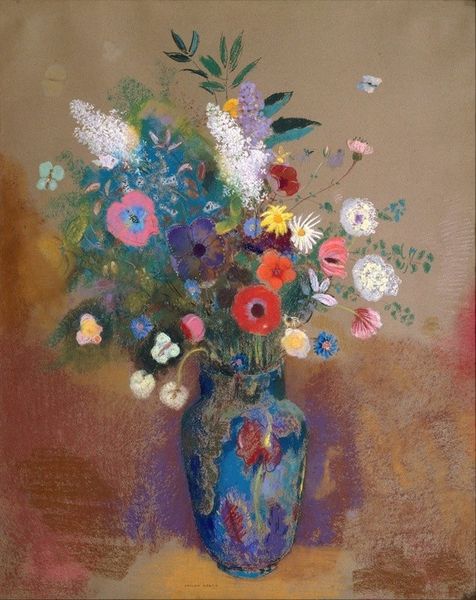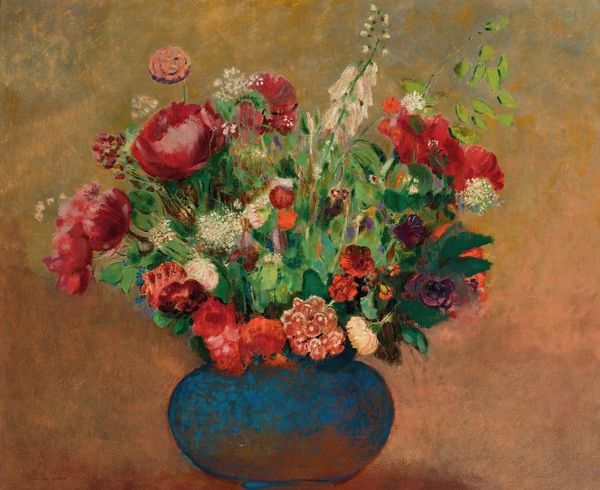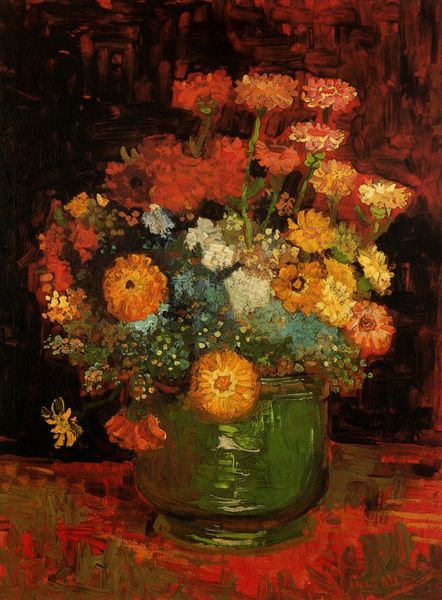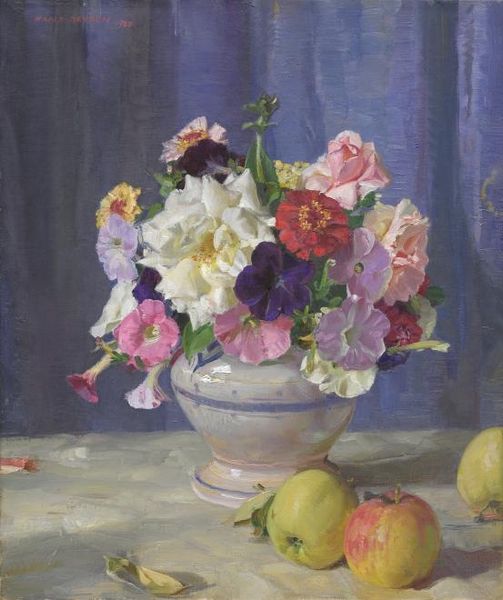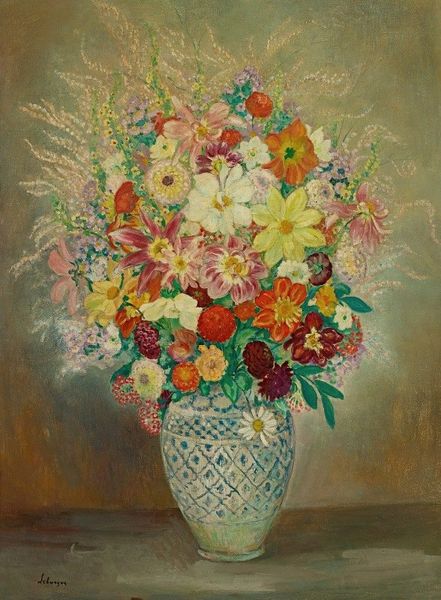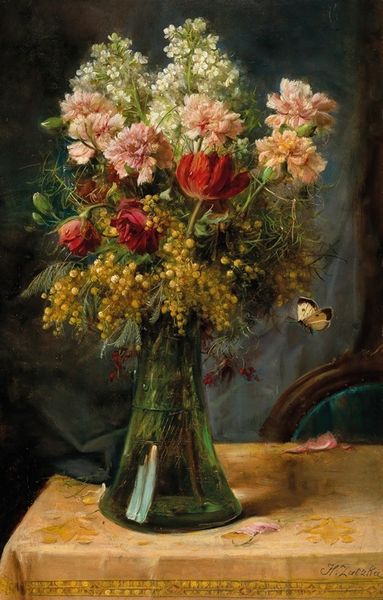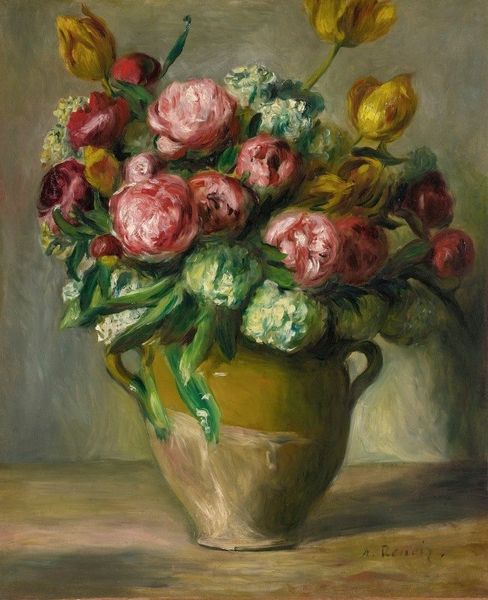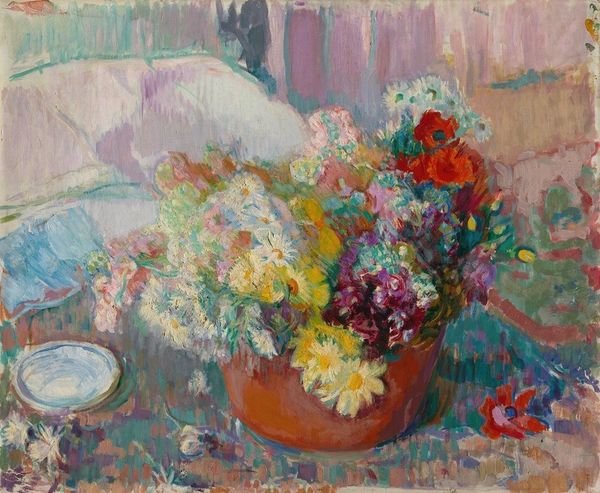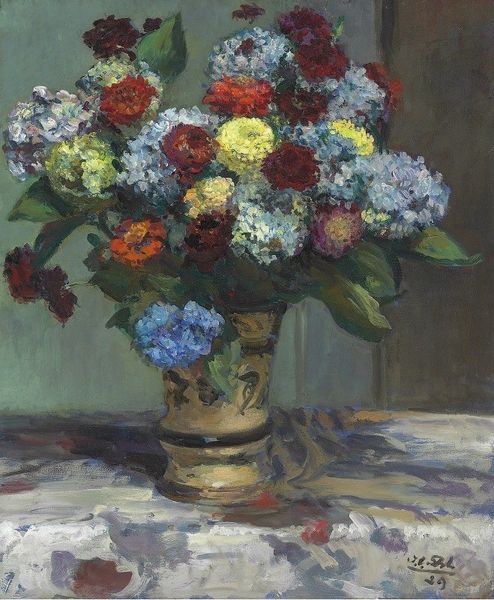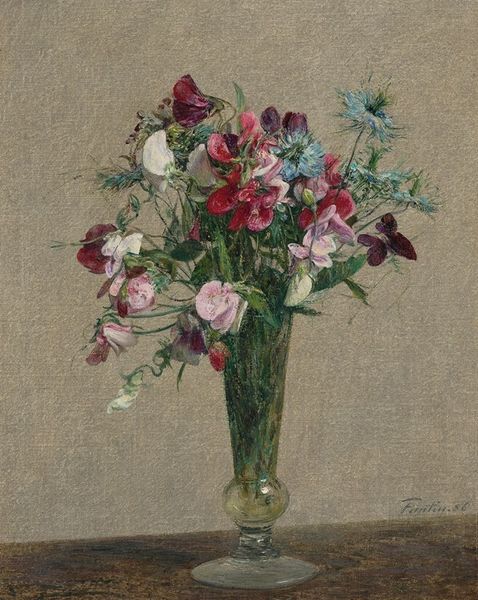
Copyright: Public domain
Konstantin Gorbatov made this oil painting, simply titled "Flowers", at an unknown date. The flowers burst forth with a riotous energy, perhaps belying a more complex story. Gorbatov was a Russian émigré, having left the country in 1922. Though seemingly apolitical, paintings such as this, produced by exiles, take on a new resonance when considered in relation to the traumatic upheaval of the Russian Revolution. What were the politics of imagery, and what role did art play in either critiquing or supporting the new Soviet state? Was the nostalgic aesthetic a form of resistance against the avant-garde art promoted by the Bolsheviks? To answer these questions, one could research exhibition reviews from the period, delve into the artist’s biography, and consult archives of émigré communities. By examining the social conditions that shaped Gorbatov's artistic production, we can better understand the public role of his art.
Comments
No comments
Be the first to comment and join the conversation on the ultimate creative platform.
